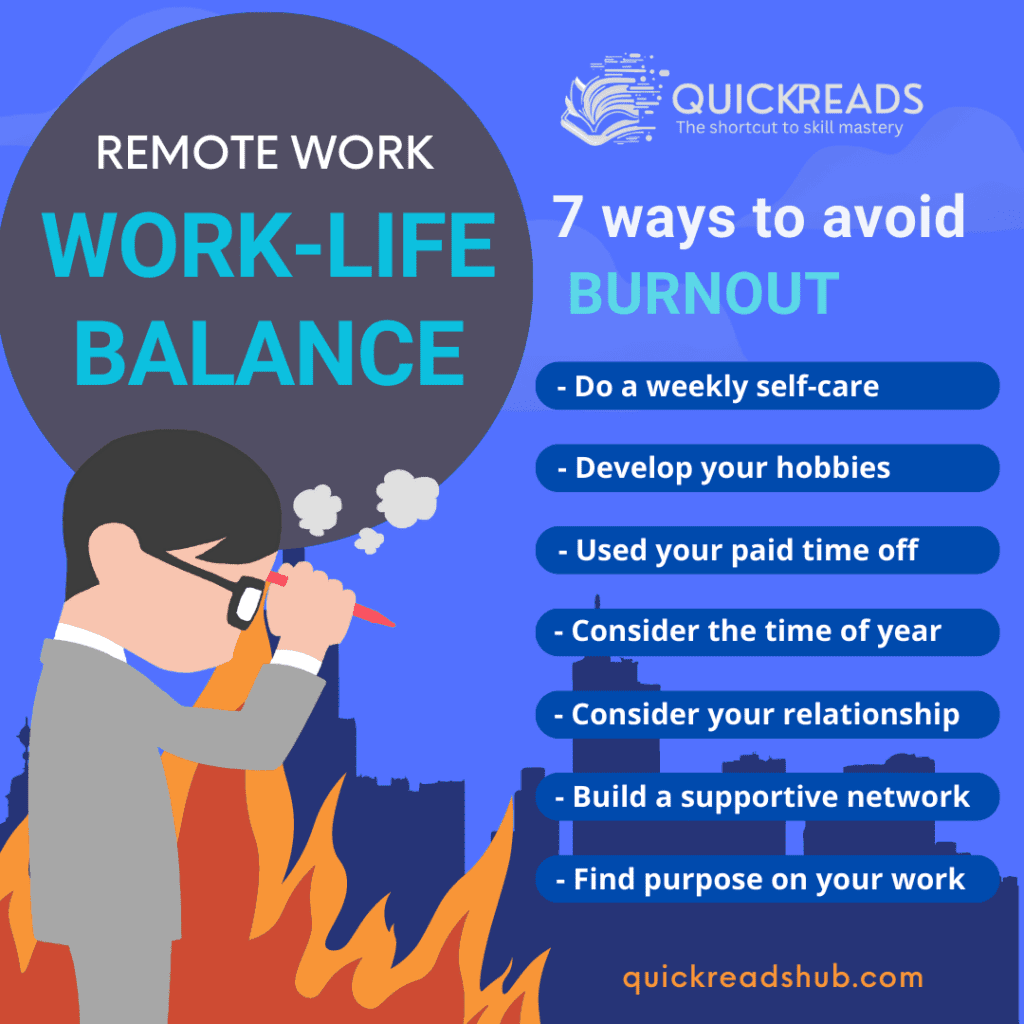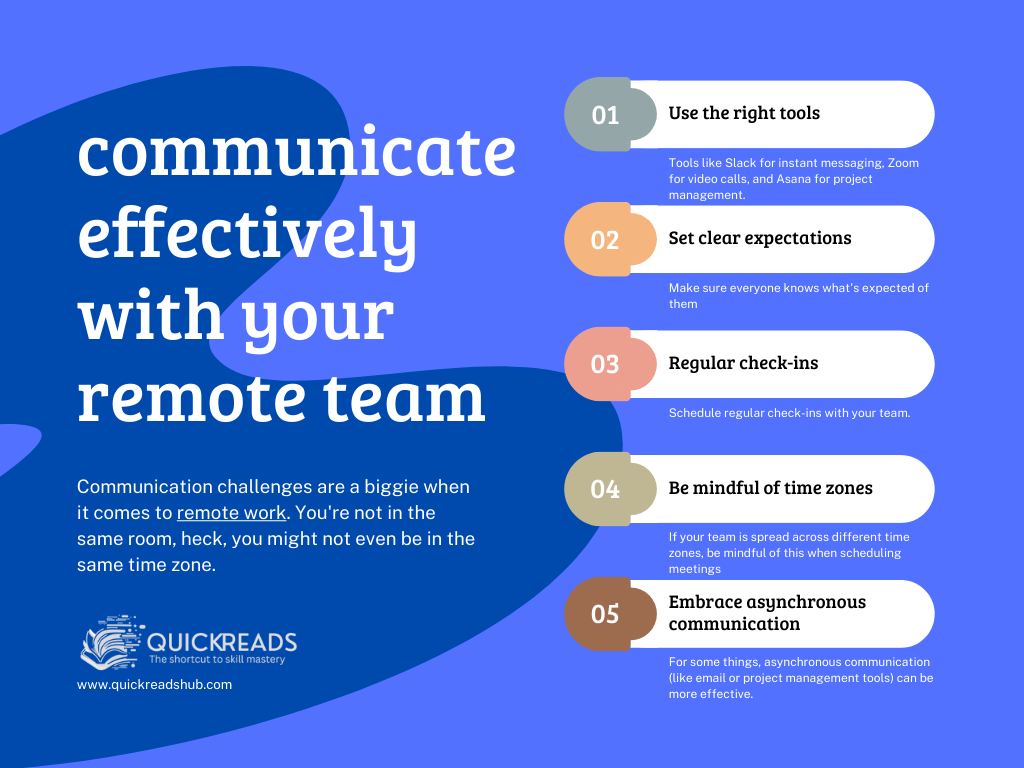Alright, let’s dive into this exciting world of remote work, shall we?
Before you dive deeper, have you checked out our ‘New Six-figure Remote Work Tips: The Ultimate Treasure Guide’ yet? If not, make sure to give it a read first for a comprehensive understanding of remote work success!
Imagine this: You're sitting in your favorite comfy chair, a steaming cup of coffee by your side, and your laptop open in front of you. No, you're not binge-watching the latest Netflix series. You're at work. This is the reality for an increasing number of people as remote work becomes more prevalent.
According to a recent study from Stanford University, remote work accounts for over a quarter of paid full-time workdays in the United States That’s a significant increase from the pre-pandemic era. The COVID-19 pandemic has undoubtedly played a significant role in this shift, forcing many companies to adopt remote work policies.
But here’s the thing: remote work isn’t just a temporary solution to a global health crisis. It’s becoming a new norm. Experts predict that 25% of all professional jobs in North America will be remote by the end of 2022, and remote opportunities will continue to increase through 2023.
Now, I know what you’re thinking. “Remote work sounds great, but it can’t all be sunshine and rainbows, right?” And you’re absolutely correct. Like anything else, remote work comes with its own set of challenges. From managing your time effectively to dealing with distractions at home, remote work can be a tricky beast to tame.
But don’t worry, we’ve got you covered. This blog post is here to help you navigate the world of remote work. We’ll discuss the challenges you might face and provide practical tips on how to overcome them. So, whether you’re a seasoned remote worker or just considering the possibility, stick around. This post is for you.
The Rise of Remote Work
Do you know how everyone’s been talking about remote work lately? Well, there’s a good reason for that. It’s on the rise, and it’s rising fast. More and more people are ditching the office and setting up shop at home. And why not? There are loads of benefits to working remotely.

First off, there’s freedom. When you work remotely, you’re not tied to an office. You can work from anywhere, whether that’s your living room, a coffee shop, or even a beach in Bali. Sounds pretty cool, right?
Then there’s the flexibility. You can often set your own hours, which means you can work when you’re most productive. Not a morning person? No problem. Start your workday in the afternoon.
And let’s not forget about the commute. Or rather, the lack of one. No more sitting in traffic or cramming onto a crowded train. Your commute could be as simple as walking from your bedroom to your home office.
But it’s not all smooth sailing. Working remotely can also bring some challenges. For starters, it can be tough to separate work from home life. When your home is your office, it’s easy to end up working all the time.
Then there’s the issue of communication. When you’re not in the same place as your team, it can be harder to stay in the loop. And if your internet goes down? Well, that’s a whole other story.
But don’t worry, we’re going to tackle all these challenges head-on in the coming chapters. So stay tuned!
Challenge 1: Poor Time Management 🕒
So, you’ve set up your home office, you’ve got your comfy chair, and you’re ready to tackle the world of remote work. But wait a minute, it’s already lunchtime and you haven’t even started on your to-do list. What happened?
Well, you’ve just run into one of the biggest challenges of remote work: time management. When you’re working from home, it’s easy to lose track of time. One minute you’re checking your emails, the next you’re doing laundry or watching cat videos on YouTube. Before you know it, the day’s over and you haven’t gotten much done.

But don’t worry, we’ve got some tips on how to overcome this challenge and manage your time effectively.
- Set a schedule: Just because you’re working from home doesn’t mean you can’t have a routine. Set specific work hours and stick to them. This will help you stay focused and productive.
- Prioritize your tasks: Not all tasks are created equal. Some are more important or urgent than others. Make a to-do list and prioritize your tasks. This will help you stay organized and ensure that you’re working on what’s most important.
- Take breaks: This might sound counterintuitive, but taking regular breaks can actually help you be more productive. It gives your brain a chance to rest and recharge. So don’t feel guilty about taking a coffee break or a short walk.
- Use time management tools: There are loads of apps and tools out there that can help you manage your time. From timers to to-do lists to project management tools, find what works for you and use it.
Remember, managing your time effectively is key to overcoming the challenges of remote work. So give these tips a try and see how they work for you.
Challenge 2: Distractions and Interruptions
Picture this: You're in the middle of a super important task, totally in the zone. Then, out of nowhere, your phone buzzes. It's a notification from your favorite game. You think, "I'll just take a quick look." Next thing you know, you've spent an hour trying to beat your high score. Sound familiar?

Distractions and interruptions are one of the biggest challenges when it comes to remote work. It’s not just your phone either. It could be your kids, your pets, your neighbors, or even that pile of laundry you’ve been meaning to do. When you’re working from home, it seems like there’s always something ready to pull your attention away from your work.
But don’t worry, we’ve got some tips on how to minimize these distractions and keep your focus where it needs to be.
- Create a dedicated workspace: Having a space in your home that’s just for work can help you stay focused. When you’re in your workspace, you’re at work. It’s as simple as that.
- Turn off non-essential notifications: Do you really need to know every time someone likes your latest Instagram post? Probably not. Turning off non-essential notifications can help you stay focused on your work.
- Set boundaries with your household: Let your family or housemates know when you’re working and that you shouldn’t be disturbed unless it’s important.
- Schedule distraction time: It’s okay to take breaks and enjoy some distractions. The key is to schedule them so they don’t take over your work time.
Remember, overcoming the challenges of remote work is all about finding what works for you. So give these tips a try and see if they help you stay focused and productive.
Challenge 3: Team Communication Challenges
Imagine you're in a band. You've got the best instruments, and you've got the talent, but if you're not in sync with each other, the music just won't sound right. That's kind of what it's like working in a remote team. You've got the skills, you've got the tools, but if you're not communicating effectively, things can get out of tune pretty quickly.
Communication challenges are a biggie when it comes to remote work. You’re not in the same room, heck, you might not even be in the same time zone. This can lead to misunderstandings, missed messages, and a whole lot of frustration.
But don’t fret, we’ve got some tips on how to hit the right notes and communicate effectively with your remote team:
- Use the right tools: There are tons of communication tools out there designed specifically for remote teams. Tools like Slack for instant messaging, Zoom for video calls, and Asana for project management. Find the ones that work best for your team and use them to stay connected.
- Set clear expectations: Make sure everyone knows what’s expected of them. This includes when they should be online, how quickly they should respond to messages, and what their responsibilities are. This can help prevent misunderstandings and ensure everyone’s on the same page.
- Regular check-ins: Schedule regular check-ins with your team. This could be a daily stand-up meeting, a weekly team meeting, or a monthly one-on-one. These check-ins can help you stay connected, address any issues, and keep everyone aligned.
- Be mindful of time zones: If your team is spread across different time zones, be mindful of this when scheduling meetings. Try to find a time that works for everyone, and be understanding if someone can’t make it due to their time zone.
- Embrace asynchronous communication: Not everything needs to be communicated in real-time. For some things, asynchronous communication (like email or project management tools) can be more effective. It allows people to respond when they have the time and reduces the pressure of instant response.
Remember, communication is the key to overcoming the challenges of remote work. So, tune up your communication skills and make some beautiful music with your team.
Challenge 4: Technology Challenges

Imagine you're all set for a big presentation. You've got your notes, you've practiced your speech, and you're ready to wow your team. But then, your internet connection drops, your video call software crashes, and your presentation file won't open. Welcome to the world of technology challenges in remote work.
When you’re working remotely, technology is your best friend and your worst enemy. It allows you to connect with your team, complete your tasks, and basically do your job. But when it fails, it can bring your productivity to a screeching halt.
But don’t worry, we’ve got some tips on how to overcome these tech challenges and keep your work flowing smoothly:
- Invest in reliable tech: This might seem obvious, but having reliable technology is crucial for remote work. This includes a stable internet connection, a good computer, and reliable software. If your tech is constantly failing, it might be time for an upgrade.
- Use the right tools: There are tons of tools out there designed to make remote work easier. From communication tools like Slack and Zoom to project management tools like Asana, to collaboration tools like Google Docs. Find the ones that work best for you and your team.
- Have a backup plan: Technology can and will fail at some point. When it does, it’s important to have a backup plan. This could be as simple as having a backup device or using a different software or platform.
- Stay updated: Technology is constantly evolving. To keep up with the changes, it’s important to regularly update your software and devices. This can help prevent technical issues and keep your tech running smoothly.
- Get tech support: If you’re facing a tech issue that you can’t solve, don’t hesitate to get help. Many companies have IT support that can help you troubleshoot and solve your tech issues.
Remember, technology is a tool to help you overcome the challenges of remote work, not a hurdle to overcome. So, keep these tips in mind and let technology be your ally in your remote work journey.
Challenge 5: Lack of Work-Life Balance

Working remotely has its perks, but it also presents a unique challenge: maintaining a healthy work-life balance. When your home becomes your office, the lines between professional and personal life can easily blur. This can lead to overworking, stress, and a feeling of being constantly “on” even during your supposed downtime.
One of the main reasons for this is the lack of physical boundaries. In a traditional office setting, you leave your work behind when you step out of the office. But when you’re working from home, your work is always just a few steps away. This can make it difficult to switch off and fully engage in personal activities or relaxation.
Moreover, the flexibility that remote work offers can sometimes backfire. While it allows you to work at your own pace and during your preferred hours, it can also lead to a lack of structure, making it easy to overwork or underwork.
So, how do you overcome this challenge and maintain a healthy work-life balance while working remotely? Here are some tips:
- Establish Clear Boundaries: Set specific work hours and stick to them. Just because you can work at any time doesn’t mean you should. Having a clear start and end to your workday can help separate your professional and personal time.
- Create a Dedicated Workspace: Having a specific area in your home for work can help create a mental boundary between your work and personal life. This space should be free from non-work-related distractions and should be used solely for work.
- Take Regular Breaks: It’s easy to get caught up in work and forget to take breaks. However, taking short breaks throughout the day can help reduce stress and increase productivity.
- Prioritize Self-Care: Make sure to take care of your physical and mental health. This can include regular exercise, eating healthy, getting enough sleep, and taking time for relaxation and hobbies.
- Communicate Your Boundaries: Let your colleagues and superiors know about your work schedule and boundaries. This can help prevent work-related communications during your personal time.
Remember, maintaining a work-life balance is not just about working less, but working smarter. By setting boundaries and taking care of your health, you can make the most of remote work without letting it take over your life.
Challenge 6: Neglecting Health

Alright, let’s talk about something we often overlook when we’re in the zone, working from our cozy home office or comfy couch – our health. Yeah, I know, it’s easy to forget about it when you’re knee-deep in spreadsheets or mid-way through a creative brainstorming session. But here’s the thing, when we’re working remotely, we tend to neglect our health, both physical and mental.
Now, you might be thinking, “But I’m at home, I’m not exposed to office germs, and I’m not eating out as much. Isn’t that healthier?” Well, yes and no. While those are definite perks, there are other health aspects we need to consider. For instance, we might not move around as much, leading to a more sedentary lifestyle. Or we might work longer hours without taking breaks because the boundaries between work and personal time can get a bit blurry.
So, how do we tackle this? How do we ensure we’re taking care of our health while working remotely?
Here are some tips I’ve gathered from [Active Minds] and [Medical News Today]:
- Create routines: Wake up at the same time each day as if you were going into the office. Set aside quiet time for yourself before you jump into work demands.
- Designate a workspace: Separate your workspace from spaces associated with leisure time. This helps create a mental boundary between work and relaxation.
- Meal prep and stay hydrated: Keep a refillable water bottle at your desk and prepare healthy meals ahead of time.
- Plan ahead: Identify your most productive times of the day and schedule your tasks accordingly.
- Take smart and mindful breaks: Disconnect from electronics when you need a mental break. Go for a walk, meditate, or do a quick home workout.
- Set boundaries: Turn off your work email notifications after your designated hours. This helps separate work time from personal time.
- Maintain physical activity: Incorporate exercise into your daily routine. This could be a quick workout, a walk around the block, or even some yoga stretches.
- Connect with others: Working remotely can sometimes feel isolating. Make sure to connect with your colleagues, friends, and family regularly.
Remember, it’s all about balance. Just like we’re figuring out how to overcome the challenges of remote work, we need to learn how to take care of our health while doing so. After all, a healthy worker is a happy worker, right?
Conclusion
Well, there you have it, folks! We’ve taken a deep dive into the world of remote work, exploring its rise and the challenges it brings along. We’ve also discussed how to overcome these challenges to make the most out of your remote work experience.
From time management issues to distractions and interruptions, from communication hurdles to technology glitches, and from work-life balance struggles to health neglect, we’ve covered it all. But remember, these challenges aren’t insurmountable. With the right strategies and a proactive approach, you can overcome them and thrive in your remote work journey.
The key is to be aware of these challenges and to be prepared to tackle them head-on. Whether it’s by setting clear boundaries, creating a dedicated workspace, taking regular breaks, or prioritizing self-care, there are numerous ways to navigate these challenges and come out on top.
So, what’s next? It’s time to put these tips into action! Start implementing these strategies in your daily routine and see the difference they make. Remember, the goal is not just to survive in the remote work environment but to thrive and excel.
And remember, you’re not alone in this journey. Millions of remote workers around the world are facing the same challenges and working towards the same goal. So, let’s learn from each other, support each other, and grow together in this remote work journey.
So, are you ready to overcome the challenges of remote work and make the most of your remote work experience? Let’s do this!
Call to Action
Alright, folks, now that we’ve armed you with all these tips and strategies on how to overcome the challenges of remote work, it’s your turn to take the stage. We want to hear from you!
Have you faced any of these challenges in your remote work journey? Do you have any additional tips or strategies that have worked for you? Share your experiences and insights in the comments below. Your story could be the inspiration or solution that a fellow remote worker needs.
And remember, while remote work comes with its own set of challenges, it also offers numerous benefits. So, let’s not forget to enjoy these perks. Whether it’s the flexibility to work in your pajamas, the freedom to set your own schedule, or the opportunity to work from anywhere in the world, let’s embrace these benefits while staying healthy and balanced.
Now, if you’re hungry for more insights and strategies on mastering the art of remote work, we’ve got a couple of book recommendations for you. These books are packed with expert advice, practical tips, and inspiring stories that will take your remote work game to the next level.
1. “Remote: Office Not Required” by Jason Fried and David Heinemeier Hansson. This book is a guide to navigating the world of remote work, written by the founders of Basecamp, a fully remote company. (Read our summary here: Remote: Office Not Required Summary)
2. “The Year Without Pants: WordPress.com and the Future of Work” by Scott Berkun. This book offers a behind-the-scenes look at the remote work culture of WordPress.com, one of the biggest and earliest fully remote companies. (Read our summary here: The Year Without Pants Summary: Secrets Of Forbidden Ways)
These books are not just informative, but they’re also engaging and fun to read. So, if you’re serious about excelling in your remote work journey, these books are a must-read.
And guess what? You can get these books with just a few clicks. So, what are you waiting for? Grab your copies today and start your journey toward becoming a remote work superstar!
Ready to Excel in Your Remote Career?
Swap your office attire for your favorite swimwear and dive into our Daily Growth Booster Elixir! This isn’t just another newsletter – it’s your personal guide to thriving as a remote worker. We deliver unique tips, insightful book summaries, and handpicked recommendations straight to your inbox. No jargon, no clutter, just the essence of success. Embark on your journey to personal growth today! It’s completely FREE and requires NO DIPLOMA! Join Now and start transforming your work-from-home experience!







